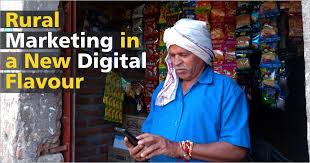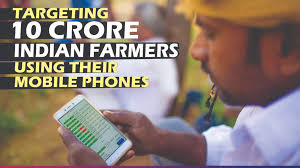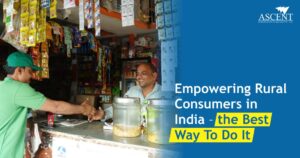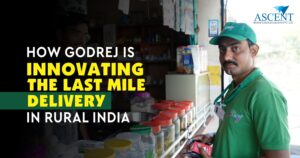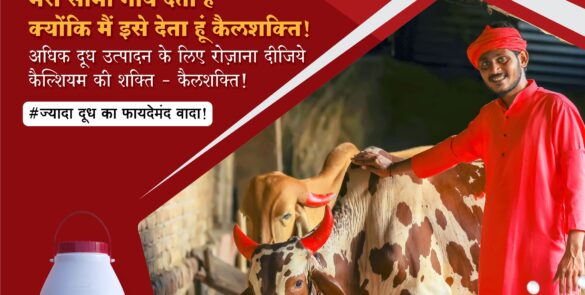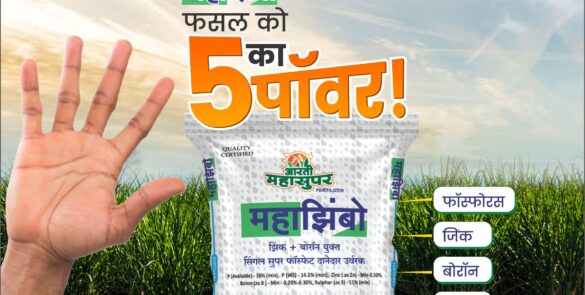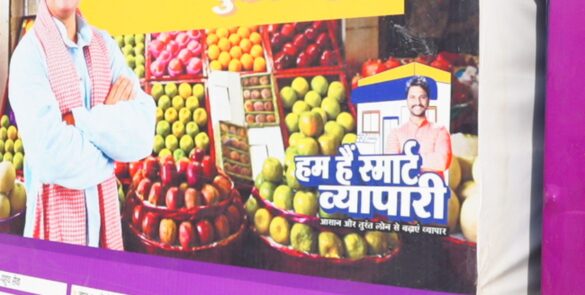India has been the largest and swiftest growing economy across the globe. But most of the consumer companies till the year 2005 were more focusing just on cities in India. However, as cities started getting saturated because of the high population and low business opportunities, consumer companies saw sluggish revenues in these segments. Hence, it became vital for organizations to enter into rural segments to sell their products and realize their targeted revenue growth.
India’s urban-rural internet usage divide seems to end soon. As per the Boston Consulting Group report, by the year 2020, fifty percent of India’s online users will be from rural areas. Presently, rural India enables to around 60% of the nation’s GDP, and with the incredible boost in overall internet usage, there is likely to be a severe uptick in digital commerce. But are rural Indians ready to turn digital? In fact, yes.
How is digital media impacting rural markets?
The Economic Times just organized its 5th edition of Rural Strategy Summit in New Delhi. The event witnessed a large number of online marketers, market researchers, policymakers, and advertising professionals, who were invited to highlight India’s rural markets.
In his speech, Dr. Nagesh Singh, Additional Secretary, Union Ministry of Rural Development, pointed that the government’s activities for social sector schemes are steering to boost rural incomes, infrastructure development across rural segments, and growing rural economy.
Exploring the Growth Patterns in Rural Economy
“PMGSY (Pradhan Mantri Gram Sadak Yojana) is to link 178,000 habitations by the year 2022. All these habitations with five hundred populations in open areas and two hundred fifty populations in tribal areas will be allied with all-weather roads in this scheme,” Dr. Nagesh Singh mentioned.
Further, the National Bank for Agriculture and Rural Development (NABARD) with its set up in 1982has played a decisive role in building infrastructure across rural India. Pointing its impacts on water and irrigation, it’s Deputy Managing Director, said, that they are working hard with the states for developing country infrastructure.
Food processing sector’s magnitude in enabling remunerative prices to the farmers for their products has led NABARD to offer exceptional momentum on funding food processing, warehousing as well as cold infrastructure.
Rural India Going Digital
The ever-increasing penetration of mobile phones, DTH, and mobile Internet across rural parts of India, is breaking all the long-established consumer connect models. It has brought a significant transformation in rural marketing. Speaking on this unvoiced uprising taking place, Pradeep Lokhande, CEO, Rural Relations, said, “Every month, around 4.5 lakh DTHs are being enabled and installed across rural India. This scenario showcases the communication push taking place across rural areas of the country. Also, due to these initiatives, even rural youth have similar objectives like their counterparts in urban areas.
Now, it is the turn of the Digital Rural Marketers to re-propose and re-plan their strategies as well as tactics accordingly. In regards to these maturing mobile communications across rural India, it has shifted the marketing strategies of Mondelez India Foods, Hemant Rupani, Director of the company said, “The major nightmare for companies like us was to know what consumers desire. We were completely dependent on the 2nd hand research data and information. However, rural India is now moving at rapidity further to our imagination. With the deep access of mobile and mobile Internet in the rural parts of the country, what products or services dealers sell in what capacity or in what total numbers we get all these details within no time. This scenario is made possible through mobile phones as today we get all the feedbacks instantly right from the consumers rather than involving other stakeholders in the process.”
Alongside, reaching rural consumers via mobile phones, how this digital source of communication has assisted and grown our businesses, Ashok Bhasin, Head of Marketing & Sales, Hero MotoCorp told that “Digital marketing is immeasurably educating, training and increasing awareness among rural consumers. By digital identification or e-KYC, it has turned simpler for banks and NBFCs (Non-Banking Financial Institutions) to authenticate and finance the consumers to increase their investment capacities.
With increasing competition in the telecom industry, the requirement of boosting customer base, and high bandwidth, mobile usage has grown in rural areas. We can see the move towards smartphones with the entry of subsequent generations in rural employment.
As per reports, by the end of 2020, half of the online population across India will be from rural segments. The enablement of online sources in rural areas could mature to as much as 35 percent that could steer over-the-top (OTT) services and other digital initiatives. It is a probability that rural India accepts OTT even ahead of cable and satellite viewing in some of the rural areas.
Significant ways in which digital marketing tactics are altering the rural segments:
1) Improving rural reach by using email marketing
Digital literacy rates in rural India see a sharp uptick due to government-driven programs such as PMGDISHA that are intended to enable digital literacy to the rural population. Under the plan, candidates will be trained on the use of smartphones, computers, and tablets for sending and receiving emails and exploring the Internet. This scenario makes email marketing an essential channel for companies looking to reinforce their rural operations.
2) Engaging customers by using mobile advertising
With rural development picking up pace in India, tied with the boost in agricultural purchasing power, this consumer segment has an incredible perspective to flourish into a real commercial opportunity. But rural consumers are a wide-ranging lot with varying requirements and with a partial understanding of digital media. Valuable digital marketing tactics need to focus on right-sizing and customer segmentation to enhance the ROI of marketing campaigns. As rural marketing is principally mobile-based, enabling advertising campaigns for mobile search, simple navigation, use of local languages, responsive layout, and easy to understand content should be essential focal points. For instance, ICICI bank’s MeraiMobile, India’s foremost mobile banking application exclusively designed for rural customers, delivers 135 banking services in more than 11 diverse Indian languages, along with value-added information like mandi prices.
3) Building a personal connection through social media platforms
Rural India has moved ahead of its urban counterpart in social media growth and usage. Social media marketing is, therefore, decisive to brands in deepening customer connect by showcasing a human image. Tracking real-time digital conversations and enabling techniques such as sentiment analysis can assist rural marketers in identifying gaps and pain points opting for personalized campaigns to attend them. The social media channels, especially Facebook, Twitter, and YouTube, have gained momentum in rural parts of India.
How is rural digital marketing creating new business opportunities?
The rural markets bring in enormous amounts of demand for different consumer products. With the boost in income levels of rural India, there is an increase in business opportunities, and companies have started to grab the open rural markets.
In such a scenario, digital marketing is a better option to choose to create business opportunities as people utilizing the internet turn in a kind of influencers in most of the rural segments. Companies, especially in the consumer goods segment, have initiated to target people with smartphones and internet connections who, in turn, will extend the brand awareness across locations.
Businesses are trying to use social media platforms to build specific rural communities and groups which will be nurtured in quick time and showcase outcomes soon.
How will rural India get further benefited from digital marketing?
With rural digital marketing, the flow of information to the rural population will become swift and easy. Information related to weather conditions, day to day rates of agricultural crops, milk and milk products, poultry, and more have been made obtainable on mobile phones by government agencies, NGOs, and other communities which need a further extension.
These activities will boost not only farm efficiencies but also the market indulgent of farmers. Additionally, training on modernized farming techniques and the use of the right fertilizers can be enabled across rural areas by online videos and other digital sources.
Many Indian villagers have proficiency in producing specific user products, but they cannot be sold in urban areas where demand for such products is better obtainable. Online merchandisers can enlarge their services for such products so that these products can be sold in urban areas and metro cities. ‘Okhai’ is one such program that is initiated by TATA Trusts to facilitate Gujarati rural women to connect with cities where rural products can be sold openly.
Key Takeaways
With time digital marketing will assist in increasing the consumption in rural India and will also generate more employment opportunities. This scenario will thereby boost the disposable incomes, which in turn will have a positive impact on the economic growth of the nation.
The digital transformation is profoundly impacting every business and segment, the marketers who don’t recognize this fact will be left behind.

